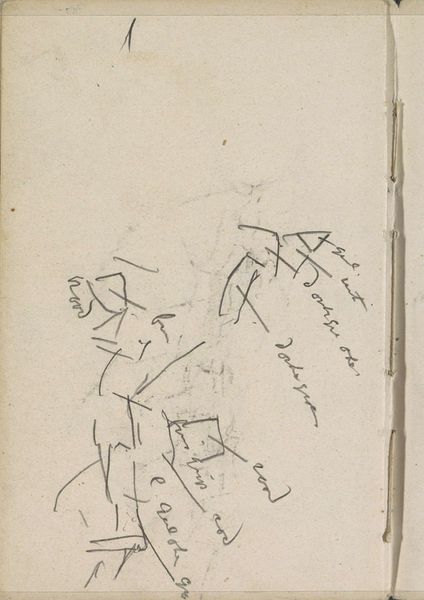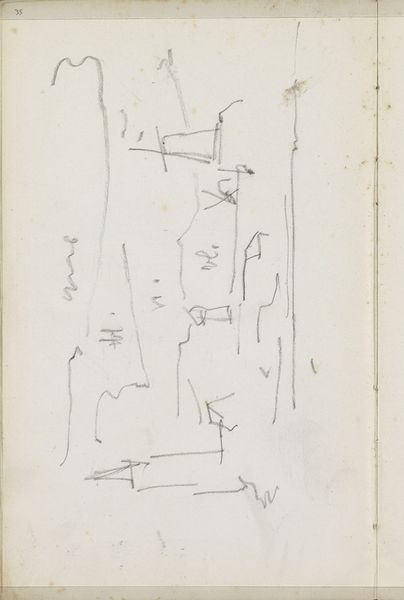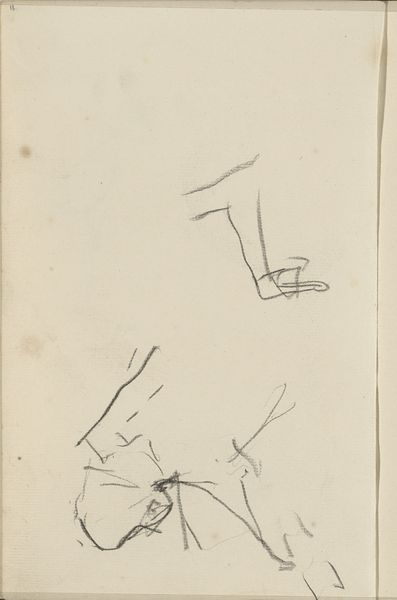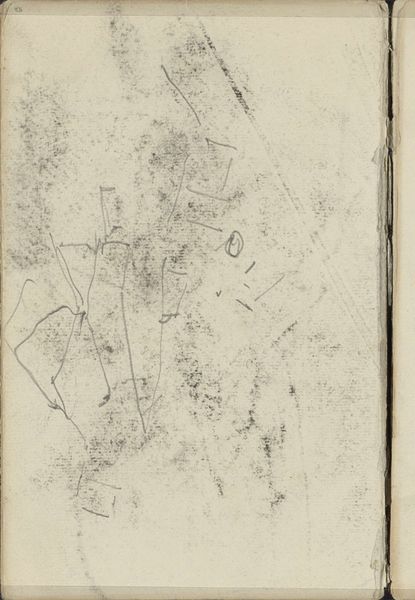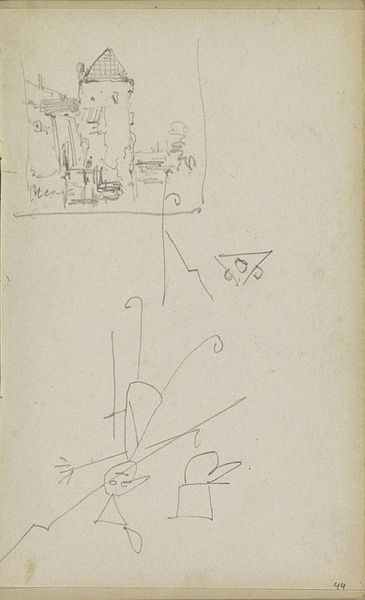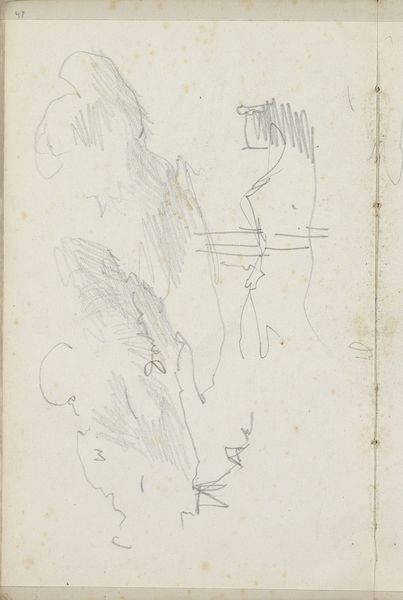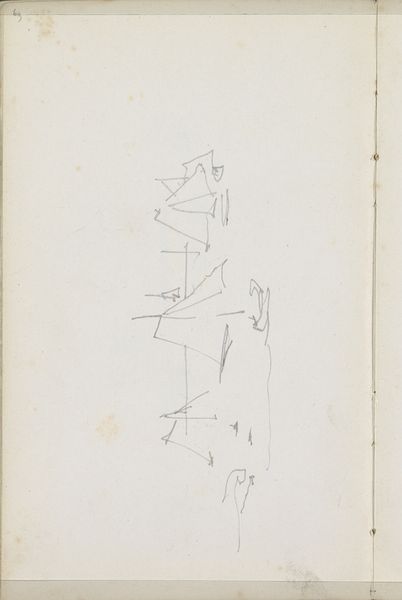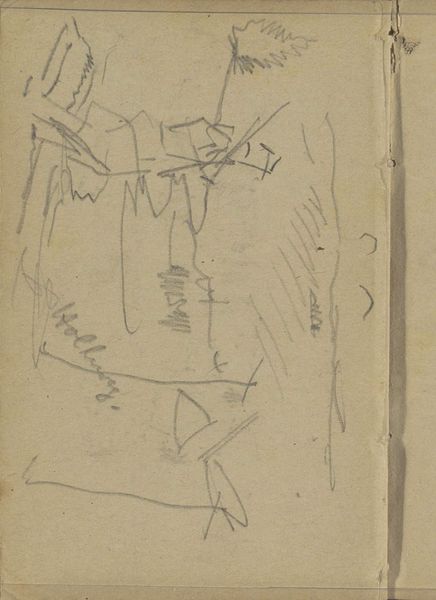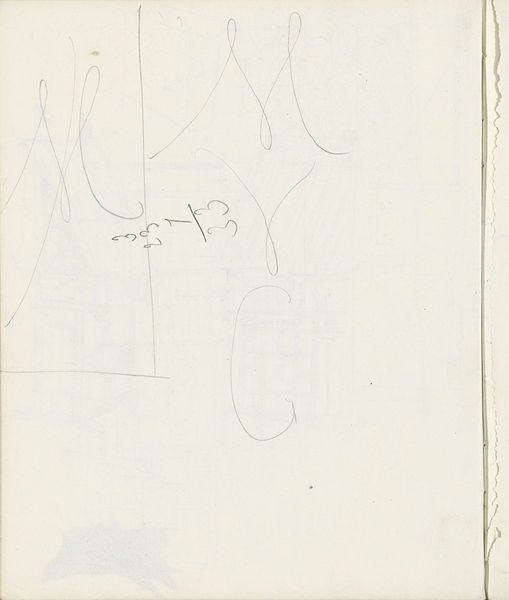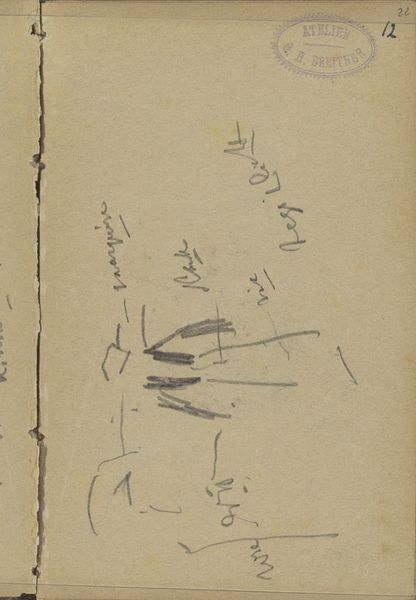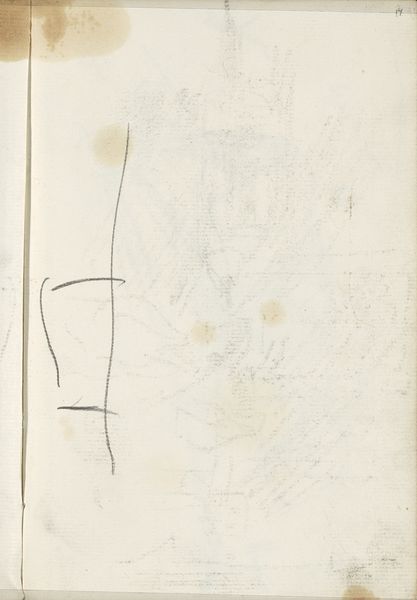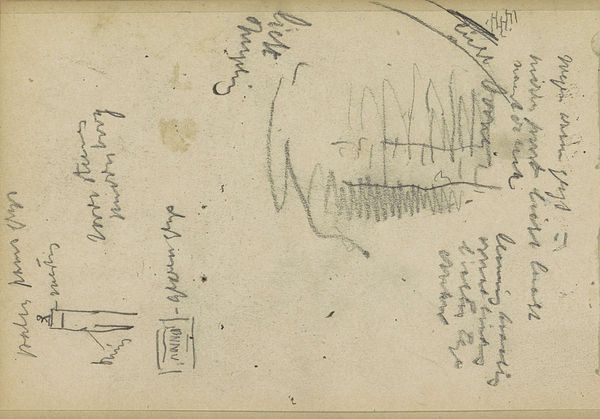
drawing, paper, pencil
#
drawing
#
amateur sketch
#
light pencil work
#
quirky sketch
#
impressionism
#
pencil sketch
#
landscape
#
paper
#
personal sketchbook
#
idea generation sketch
#
sketchwork
#
pencil
#
sketchbook drawing
#
sketchbook art
#
initial sketch
Copyright: Rijks Museum: Open Domain
Curator: Here we have “Studie, mogelijk van een kaart” a drawing executed in pencil on paper between 1880 and 1882 by George Hendrik Breitner, currently held at the Rijksmuseum. Editor: My immediate impression is one of searching—searching for a connection. The pencil lines are faint, tentative almost, as if tracing a path not yet fully known. Curator: It certainly seems that way. This is a study, potentially for a map as the title suggests, or some form of personal record-keeping. These sorts of drawings would be created as documents of everyday life to be reviewed and explored later in studio work. Breitner had to balance art with documenting city development, hence we have many similar location sketches. Editor: And within that tentative quality lies, perhaps, a greater truth. Maps, after all, are rarely definitive; they reflect the perspectives, the biases even, of the mapmaker. I see in these incomplete lines the inherent subjectivity in attempting to represent reality. Look at the scattered writing, these act as memory devices and only add more information to the drawing, for both himself, and us later, viewing it. Curator: That's a wonderful point. Consider also that Breitner worked in a rapidly changing Amsterdam. Urban development was reshaping the very landscape he sought to capture, making any map, any representation, inherently transient. Editor: Precisely. The symbols, if indeed they are intended as such, are less about fixed geographical markers, more about conveying the emotional and cultural weight attached to those locations for the artist himself. Curator: We can even look at it through the lens of institutional support. By recording daily observations and city developments Breitner could appeal to contemporary society's interest, as they strived to understand modernity through landscape and new experiences. This makes even personal sketchbooks something desired by collectors of the era. Editor: Ultimately, it strikes me as a powerful reminder of how we project ourselves onto the world around us, transforming objective spaces into deeply personal narratives. It also offers a new way to read maps, focusing less on location but also the memory inscribed within its locations and linework. Curator: Indeed, it reveals the fascinating interplay between external landscape and internal experience, and a lot of information on the way drawings act for social communication at the time. Editor: Well, I know now to give more consideration and value to simple, everyday sketchbooks and understand the social reasons why they might exist beyond aesthetic pursuit.
Comments
No comments
Be the first to comment and join the conversation on the ultimate creative platform.
